by Lisa Cooke | Jan 25, 2017 | 01 What's New, Adoption, Book Club |
Genealogy for adoptees can be a difficult journey. A train ticket from 1856 and one of our most popular Genealogy Gems Book Club titles helped one woman solve an adoption family mystery. Here’s her story.

Ben Brooksbank [CC BY-SA 2.0 (http://creativecommons.org/licenses/by-sa/2.0)], via Wikimedia Commons
Adoption Mystery: Solved
I recently read an article that I just had to share! Julia Park Tracey’s two-times great grandfather, William Lozier, was adopted. She wanted to trace his family history. Her only clue was the receipt for a train fare from New York’s Home for the Friendless to Oberlin, Ohio that William had. The ticket cost $7.50 and was dated 1856.
With a little bit of easy math, Julia realized that William would have been a three-year old at the time. Can you imagine? Julia was intrigued by the finding, but didn’t think much more about it until she read Orphan Train by Christina Baker Kline. This piqued her curiosity about Williams’s story and she started researching. What she found was an astonishing story of family struggling to stay together during the hardships of 19th century life.
Along her research journey, Julia learned that William’s mother was widowed in upstate New York in 1848. Consequently, the woman lost the family farm and needed to give up her two oldest boys to an orphanage. She managed to hold on to her oldest daughter and baby William while she worked as a seamstress. Sadly, she still couldn’t make ends meet and ended up placing her last two children in an orphanage as well.
Julia explains in the article: “Martha was undaunted; she worked and saved, and eventually wrote to ask for her children back. The orphanage did not respond. In those days, a child’s moral and spiritual welfare were tantamount, and a single mother was seen as not fit to parent. Nevertheless, she found her way to her daughter, and at least one of her middle sons, if not both. Martha lived the rest of her life with her married daughter and her grandchildren. She died between 1900 and 1910, [but] she never saw nor heard of what had happened to Will.”
With these new pieces of information, Julia was able to trace the line back through time and generations. She even learned a little more about her unexpected DNA results! I am sure it was very satisfying to finally piece together the story of the old train ticket and William’s family story. Even the smallest clues like the old train ticket can lead to long-forgotten stories that add to our family history tapestry. Genealogy is all about persistence, and much like a detective, the smallest piece of evidence can make all the difference!
More on Genealogy for Adoptees
 If you’ve been a Premium member for a while, you’ll recall Orphan Train by Christina Baker Kline. It was one of our first Genealogy Gems Book Club selections—and based on feedback from you, it’s been one of our most popular choices. If you haven’t listened to Premium episode 121 which includes our interview with Christina, I encourage you to go back and listen. In that conversation, you’ll learn about the history of the orphan train riders in the U.S. and Canada and how the author researched it.
If you’ve been a Premium member for a while, you’ll recall Orphan Train by Christina Baker Kline. It was one of our first Genealogy Gems Book Club selections—and based on feedback from you, it’s been one of our most popular choices. If you haven’t listened to Premium episode 121 which includes our interview with Christina, I encourage you to go back and listen. In that conversation, you’ll learn about the history of the orphan train riders in the U.S. and Canada and how the author researched it.
Learn more about the Orphan Train and it’s riders in this post: “Road Trip Anyone? An Orphan Train Museum.”
See what else we’ve read by clicking: Genealogy Gems Book Club
by Lisa Cooke | Jan 23, 2017 | 01 What's New, Adoption |
Adoption and genealogy often cross paths. More and more genealogists are having to navigating between both birth family and an adopted family pedigrees. Our easy, step-by-step instructions will show you how to merge these two pedigree charts into one with FamilySearch Family Tree and Ancestry.com.
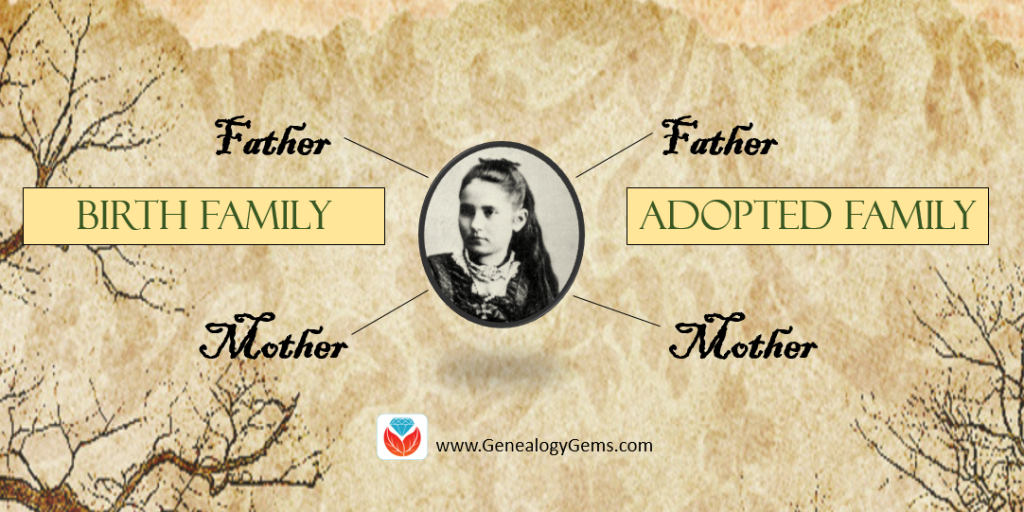
Creating a Birth and Adoption Line with FamilySearch Family Tree
Anyone can create a family tree at FamilySearch.org for free. You need to create your free account first. If you need more instruction on how to get started with a family tree on FamilySearch, click here.
For those of you who already have a FamilySearch family tree you work with, here is how to include both a birth line and adopted line.
In this example below, James Donald Woodard was raised by Robert Cole and Goldie Witt, but is the natural son of Elmer Woodard and Margaret Cole.
Step 1: From the pedigree view, click on the person you would like to have two pedigrees for. Then, choose “Person” to get to the individual’s person page.
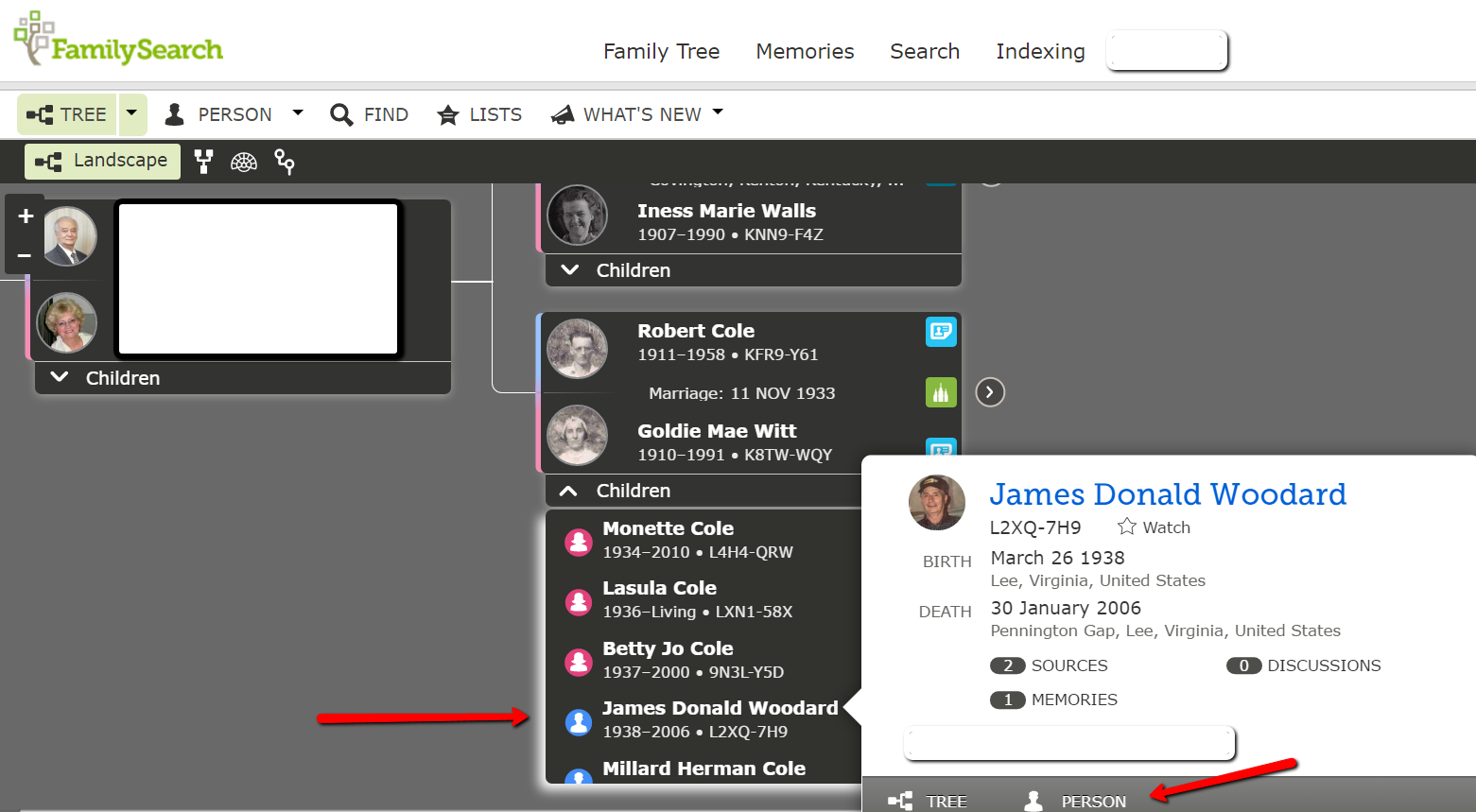
Step 2: At James’ person page, scroll down to the “parents and siblings” section. Here, multiple sets of parents can be added by clicking on “Add Parent.” We can also indicate what type of relationship the parent has to the child (choices include: biological, adopted, guardianship, foster, and step) by clicking the little pencil icon at the right of James’ name under the parent couple. Lastly, whichever couple is marked “preferred” will be the parents that will show up in your pedigree view.
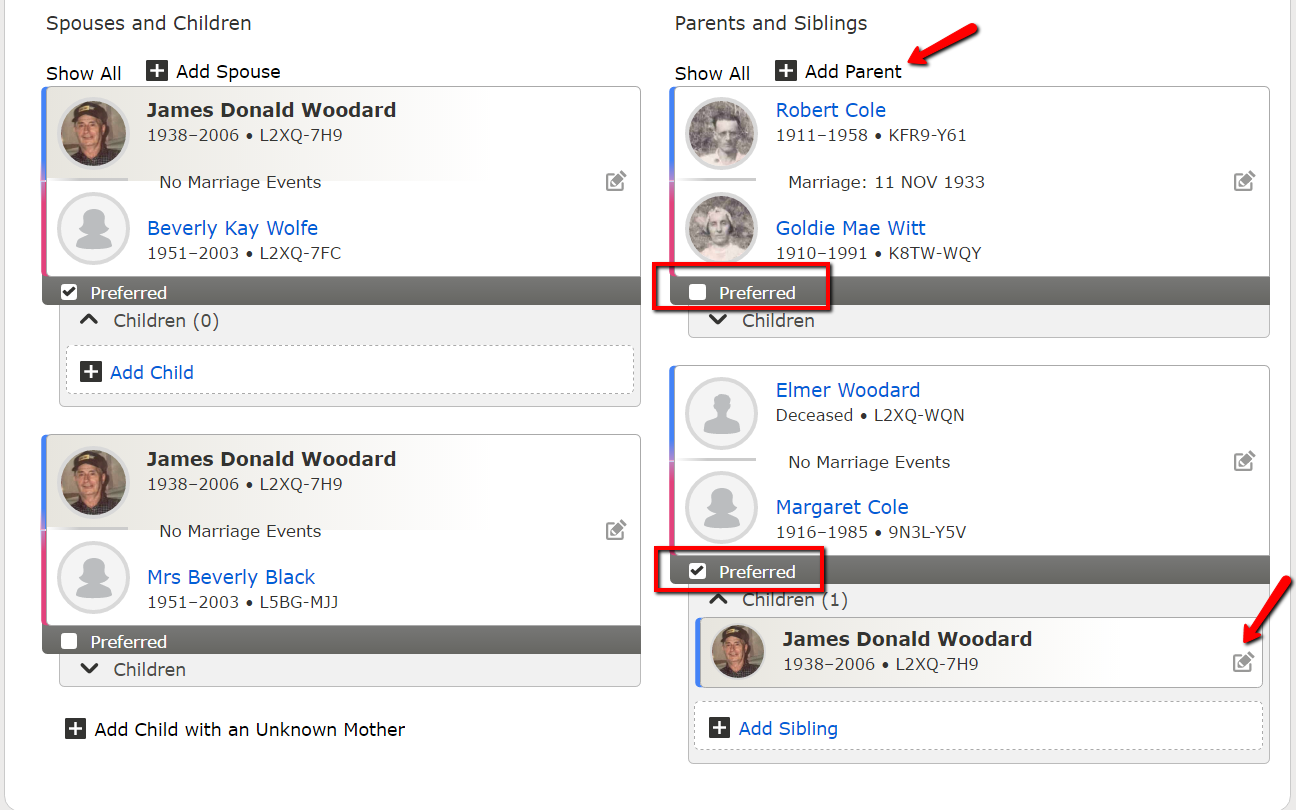
Step 3: Add a second set of parents for James by clicking on the “Add Parent” icon and follow the prompts to add the new parents by name.
Step 4: You will have James appearing as a child under each couple. Now, indicate the type of relationship James has with each couple.
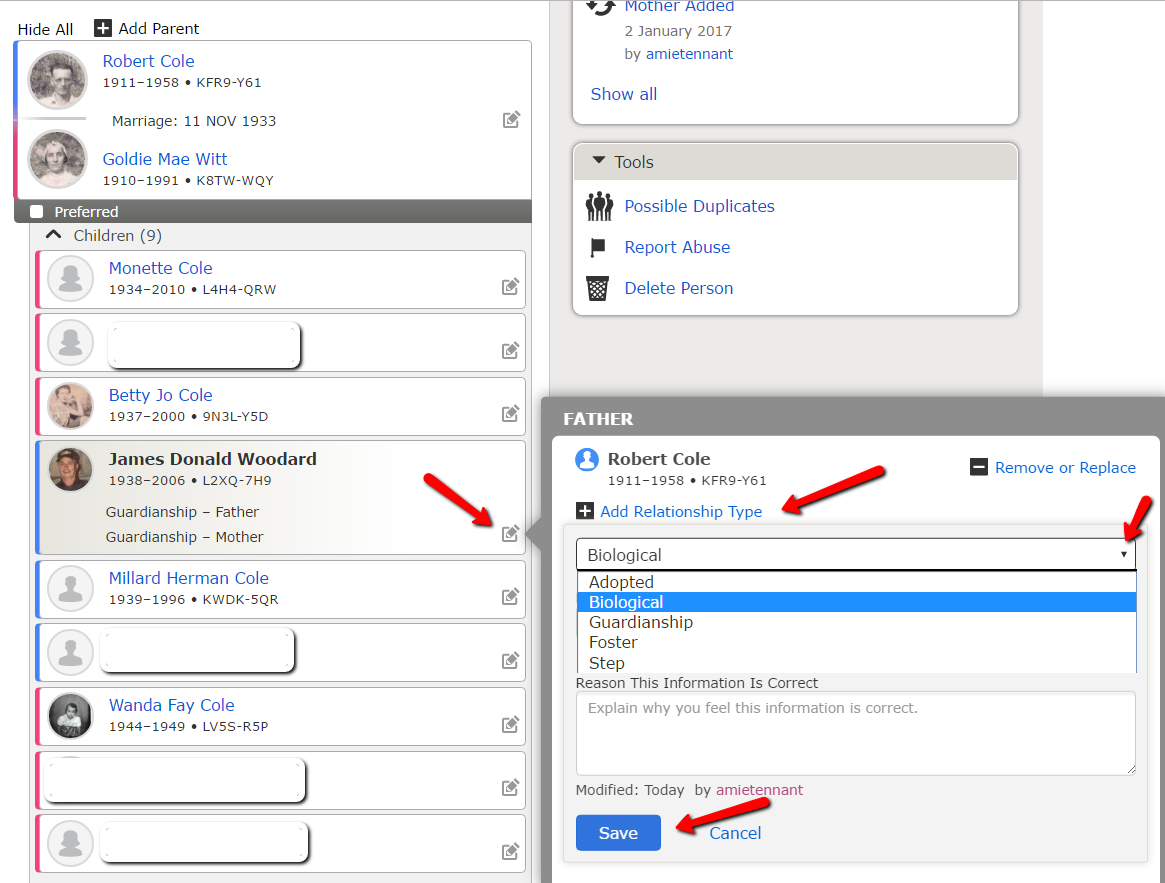
Find James in the list of children under Robert and Goldie.
Click on the little pencil icon in his box. A new window will pop-up. You will click on “Add Relationship Type” and then choose the appropriate relationship from the pull-down menu. When you are finished, click “Save.” You will need to do this for both the father and the mother.
You can see that James’ name appears under Robert and Goldie with the relationship noted. (When the relationship is biological, no notation appears.)
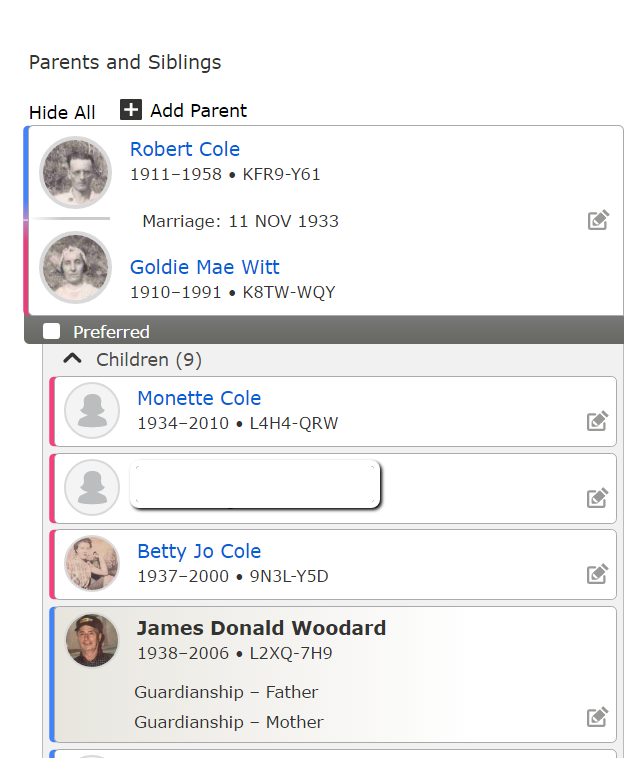
James now has two pedigree options. We can easily switch between the pedigrees for James by clicking the preferred button on whichever couple we would like to view. You can change the preferred couple whenever and how-many-ever times you want!
Creating A Birth and Adoption Line at Ancestry.com
Step 1: First, add one set of parents for the individual. You can do this in the pedigree view. Click on “Add Father” or “Add Mother” and fill in the fields for name, date of birth, etc.
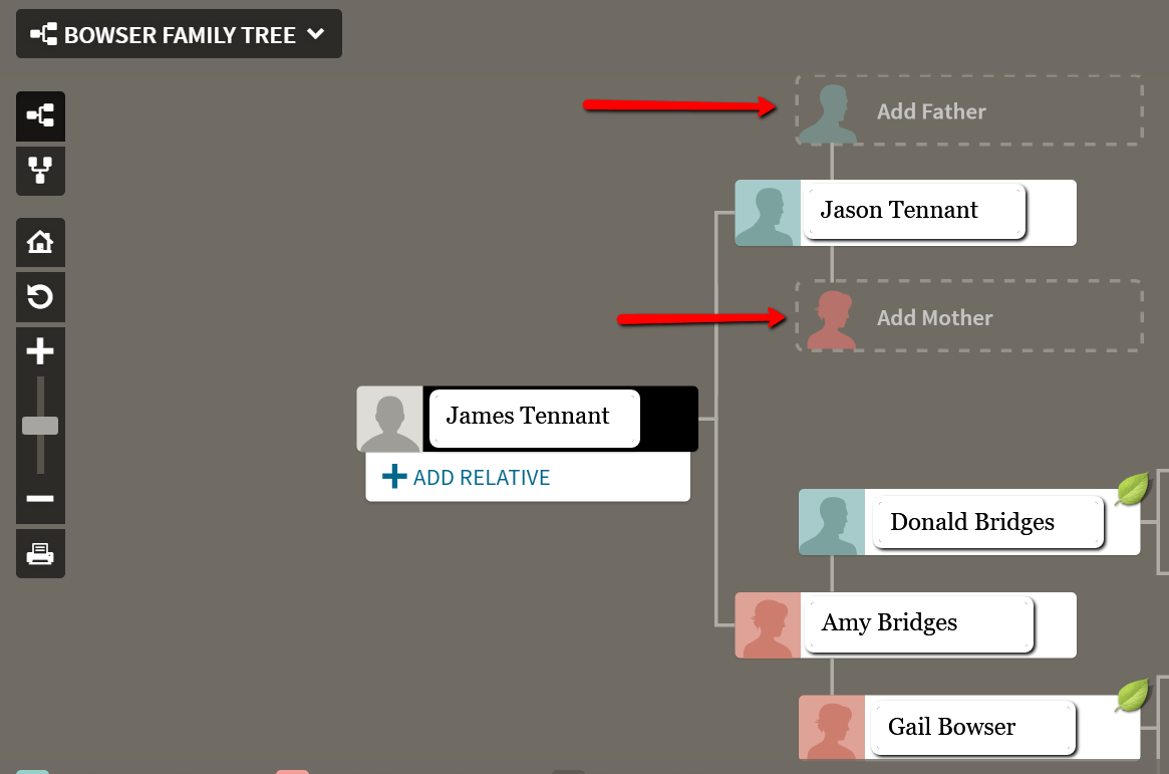
Step 2: Add a second set of parents for Jason by clicking on Jason’s name and choosing “Profile.” This takes you to a new screen that looks like this image below.
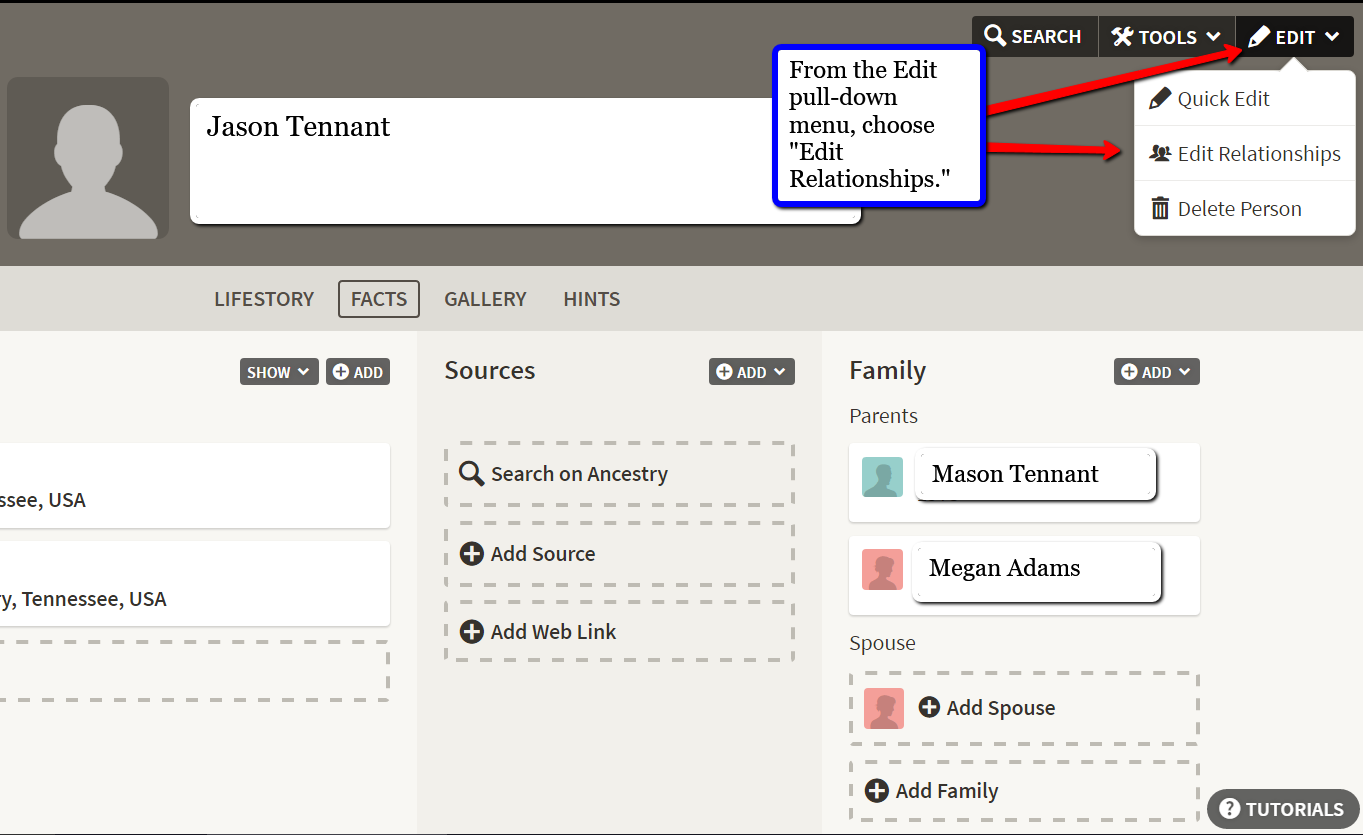
Step 3: This is Jason’s profile page. You can see his newly added parents, Mason Tennant and Megan Adams. Click the edit button at the top right of the screen and chose “Edit Relationships.”
Step 4: A pop-up window for relationships will appear. Here, you can mark the type of relationship between Jason and Mason. The choices are biological, adopted, step, related, guardian, private, and unknown. After you have chosen the appropriate relationship for the first father, click “Add Alternate Father.”

Step 5: Add the name of the second father and choose the appropriate relationship. You will then be able to choose which father you want to mark “preferred.” Do the same for the mothers.
If we want to see Jason’s birth or adopted family tree, we need only go to his profile page, click “Edit Relationships” at the top right, and mark one set of parents as “preferred.” Then, that couple will show up in the pedigree view.
Adoption genealogy certainly has it’s challenges, but creating a pedigree chart that includes both the birth and adoption lines, doesn’t have to be one of them! Let us know in the comments below how you have included both your birth and adoption lines into your family history. We love to hear from you.
More Adoption Gems
DNA for Adoption Research: Nice to Meet You!
Genealogy Gems Podcast episode 178: CeCe Moore Talks about Genealogy and Adoption (Listen for free)
DNA Testing for Adoptees: Advice from Your DNA Guide
by Lisa Cooke | Jan 21, 2017 | 01 What's New, Ancestry, Census, Legacy Tree Genealogists |
So, you think there might be a missing census page? Whether it’s a missing census or a missing family, my special guest, professional genealogist Kate Eakman from Legacy Tree Genealogists has strategies to help you figure it out. She has just the answers you need to find your ‘missing’ family.
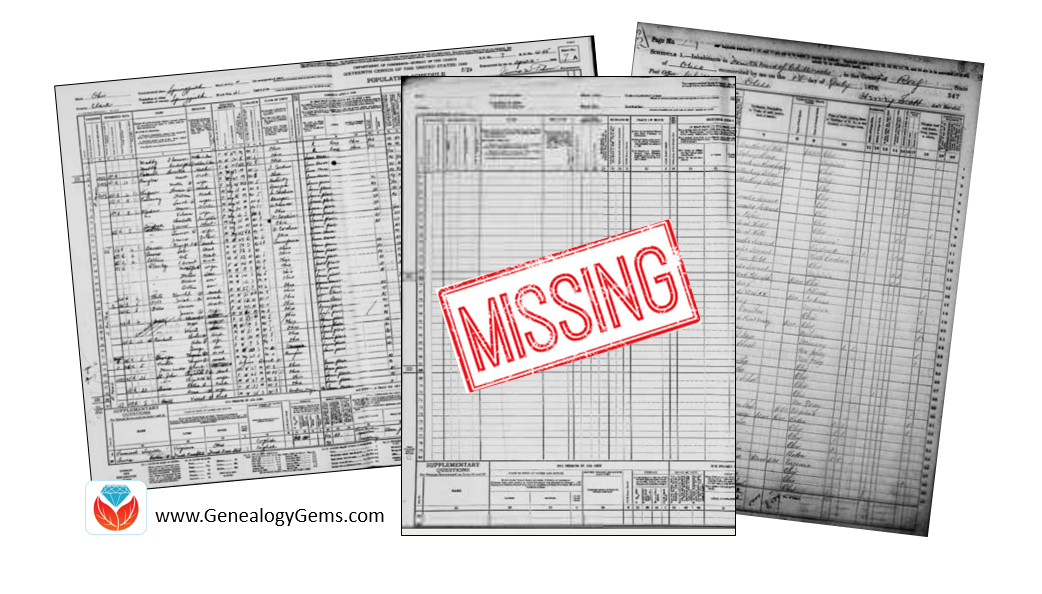
A Genealogy Gems reader doing genealogy research in New Jersey has lost her family! Well not literally, but she can’t find them in the 1940 U.S. Census. Here’s the email I recently received from her:
I am having a problem finding my mother and grandparents in the 1940 census. My grandfather, William Charles Opfer, was born on October 15 1900. I can find him in the 1930 census living in Glouescter Township, (Unincorporated Grenloch) Camden County, New Jersey. He is living with his wife Kathryn (Katharine) Opfer and three children: William C Jr, Robert, and Nancy (my mother).
When I search the 1940 census on Ancestry nothing shows up. So I went to the government web site and converted the 1930 Enumeration District to the 1940 Enumeration District. The 1940 Enumeration Districts were 4-57, 4-58, and 4-61. I then went through all of the pages for each of the districts looking for William C. Opfer. I did this on Ancestry, Family Search, and NARA. No William C. Opfer.
I then went back to the 1930 census and looked at his neighbors. I searched for each of the 13 heads-of-household neighbors from the 1930 census. Two had moved 1940 and I found them. I could not find the other neighbors in the 1940 census. I am wondering if a page from the 1940 census did not get scanned? Is there somewhere else I could look?
Missing Census Answers from Kate Eakman, Legacy Tree Genealogists
First, let me say how impressed I am with this Gem’s research and her dedication to finding this census report. She has made some very thorough searches and performed a number of advanced genealogical techniques in her quest for the 1940 U.S. Census page. It hardly seems fair that all that work didn’t yield the success she surely earned.
The government website she referenced is the National Archives 1940 Census page. The use of the page “1930 Records Search” allowed her to simply locate her grandfather in the 1930 U.S. Census. Then, by clicking a few buttons, discover the corresponding enumeration districts (ED) for the 1930 ED in which he and his family lived: 4-57, 4-58, and 4-61.

I, too, have scrolled through page after page searching for that one elusive name and we know how tedious that task can be! Using three different sites was a good strategy and one that we employ ourselves here at Legacy Tree Genealogists. Different images might be easier or more difficult to read, although in the case of these three EDs, the copies seemed to be uniformly easy to read.
The first two EDs were for Blackwood, an unincorporated part of Camden County, New Jersey. The third one was for the Lakeland Tuberculosis Hospital, unlikely to have housed the entire family, but certainly worth looking through in case one Opfer was a patient there.
ED 4-58 had an interesting variation at the end of the report. The last two pages were not 15A and 15B, as would be expected, but were 61A and 61B. This indicates these households were enumerated at a later date than were their neighbors. Because federal law requires every household to be counted, and because not everyone was at home when the enumerator arrived, the enumerator had to return on a different day and attempt to gather the necessary information for those families. They were recorded separately, beginning with page 61A.
People living in hotels, trailer camps, and other places normally designed for single-night stays were enumerated a week after the initial enumeration and those pages are numbered beginning with 81A. Not every ED has a 61 or an 81 page, but if you see one, now you know why the page numbers suddenly changed so dramatically.
The writer’s use of Elizabeth Shown Mills’ FAN Club was an excellent idea, too. FAN, an acronym for Friends, Associates, and Neighbors, takes advantage of the fact that people, in general, tend to remain geographically close to the people they know. [Read more about this in our post, “The Genealogy FAN Club Principle Overcomes Genealogy Brick Walls“] If a portion of a community moves, they tend to move together and relocate in the same general area of their new location. Her instincts to use this tool were excellent, even if they did not produce the desired results. This falls under the heading of “reasonably exhaustive research” and should always be included when someone, or in this case something, can’t be found, but should be there.
The fact that the researcher was able to locate only two of those neighbors could be explained, in part, by the fact that so many were in their 60s, 70s, and even 90s in 1930. They simply may have passed away in the intervening ten years. Another explanation, particularly for the working families, is that the Great Depression caused many families to move in order to find employment.
This may have been true for the Opfers. We noticed in 1930, William was employed as a supervisor for Reading Transportation. While supervisors were important to the operation of any transportation company, it is possible William found himself unemployed, as was true for millions of other Americans. If that happened, he and his family could have moved anywhere in the United States in an effort to find work. Alternatively, William may have left to find work while Kathryn and the children lived by themselves in reduced circumstances, or with family or friends.
To this end, I searched for William and Kathryn, and then each of the three children individually, in the hope of locating one or more family members. Using the “less is more” strategy which is often an important part of genealogical research, I searched with and without the family members’ ages, places of birth, and other family member’s names. Because the surname “Opfer” might have been misheard by the enumerator or grossly misspelled, I even searched for the various members of the family with no surname. Since we did not know where the family may have lived between 1930 and 1944, we included all of New Jersey, Delaware (the home state of Kathryn), as well as neighboring Pennsylvania and New York in our searches. The lack of positive results meant we needed to expand our search to the Eastern seaboard, and then the entire United States.
We also identified the names of William’s and Kathryn’s parents, William and Sallie Opfer and Raymond and Corrine Mason, and searched their households and neighborhoods for William and Kathryn. They were not there. Walter, William’s younger brother, was not hosting the family, either.
The writer had asked if it was possible that a page from the 1940 U.S. Census did not get scanned. Since the 1940 census has only been available for four years, it is still possible, although not probable, that there are one or more pages missing unbeknownst to anyone. Our research revealed only a few pages from a couple EDs in Ohio and South Dakota that were missing from the FamilySearch collection. There is no indication anywhere that there are missing pages from New Jersey. In addition, the pages in the three possible EDs for the Opfers were all included and in the correct numerical order, with no indication of any missing pages at the end. Therefore, I think we must conclude that missing pages do not explain the Opfer family’s disappearance.
Other Databases to Help
There are two other databases which might provide some insight into the location of the Opfer family. The first is the set of 1942 World War II draft registration cards. All men between the ages of 18 and 65 were required to register for this draft. The draft registration cards would have included the address at which William lived in 1942; however, there was no card for a man named William Opfer (or with only the surname “Opfer”) born between 1895 and 1905.
The final search was the database of city directories. A poorly-indexed city directory reported the Opfers lived in Haddonfield, New Jersey in 1943, but there are two directories contained in the same book, and the listing was actually for 1947. It reported William and Katherine lived at 209 Washington Avenue with their children William and his wife, Robert, and Nancy. William’s brother, Walter, and his wife Edith lived nearby. Unfortunately, the search for them in 1940 revealed that 79-year-old widower William Pape lived at that address with his household servants who were not the Opfer’s.
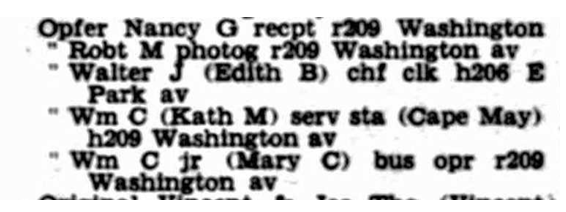
The William Opfer family in Haddonfield, New Jersey in 1947.Photo courtesy Ancestry.
Although the turmoil and upheaval of the Great Depression meant families were scattered, and it would have been easy to miss enumerating many households in the mid-1930s, by 1940 the U.S. was recovering from the effects of the Depression. Some agencies, such as the Works Progress Administration (WPA) and the CCC (Civilian Conservation Corps), were in place to provide work for men. Many war-related industries on both coasts were revived by the Allies’ efforts to stop Hitler.
In other words, there should have been work and stability for the Opfer family by 1940, and they ought to have appeared in a census report. The evidence of the 1930 census and the 1947 city directory strongly suggest they remained in or close to New Jersey, but all of the efforts to locate them have failed to yield positive results.
One Last Scenario
One possible scenario which would explain the Opfers apparent absence from the 1940 census is a simple one: perhaps the family was in the process of moving from one location to another in the month of April when the census was enumerated. Although the census was supposed to be enumerated on 1 April, the reality is that it was simply impossible to knock on every door and obtain the necessary information in one day. Some enumeration districts were fully counted by the 4th of the month. Other places were not completed until the 30th. This was true even in the same town.
If the Opfers had moved across the street from 206 Washington Avenue to 209 Washington Avenue in Haddonfield, for instance, between the 5th and the 14th of April, they would have moved from one enumeration district to another. Because the 209 Washington Avenue address had been enumerated on 4 April, they would not have been counted in that new location. And, because the 206 Washington Avenue address was not enumerated until the 15th of the month, they would not have been included in that EDs census report. We have seen this happen in the reverse and a family was enumerated twice because they moved during the enumeration, so it certainly could have happened the other way around. This is the only explanation we can find to explain the absence of the Opfers from the 1940 U.S. Census.
More About Kate Eakman at Legacy Tree Genealogists and SAVE $100!
 Kate Eakman grew up hearing Civil War stories at her father’s knee and fell in love with history and genealogy at an early age. With a master’s degree in history and over 20 years experience as a genealogist, Kate has worked her magic on hundreds of family trees and narratives.
Kate Eakman grew up hearing Civil War stories at her father’s knee and fell in love with history and genealogy at an early age. With a master’s degree in history and over 20 years experience as a genealogist, Kate has worked her magic on hundreds of family trees and narratives.
Areas of expertise:
-Native American Genealogy
-U.S. Civil War & Victorian America
-Narrative Biographies
-Irish Genealogy
The team of expert genealogists at Legacy Tree Genealogists can help bust through your brick walls. They do the research and you enjoy the discoveries!
by Lisa Cooke | Jan 18, 2017 | 01 What's New, Research Skills |
Resolving conflicting evidence in genealogy research is sometimes difficult. Some types of conflicting evidence we come across are common. Here are some tips to resolving three of the most common conflicting records and why they exist.
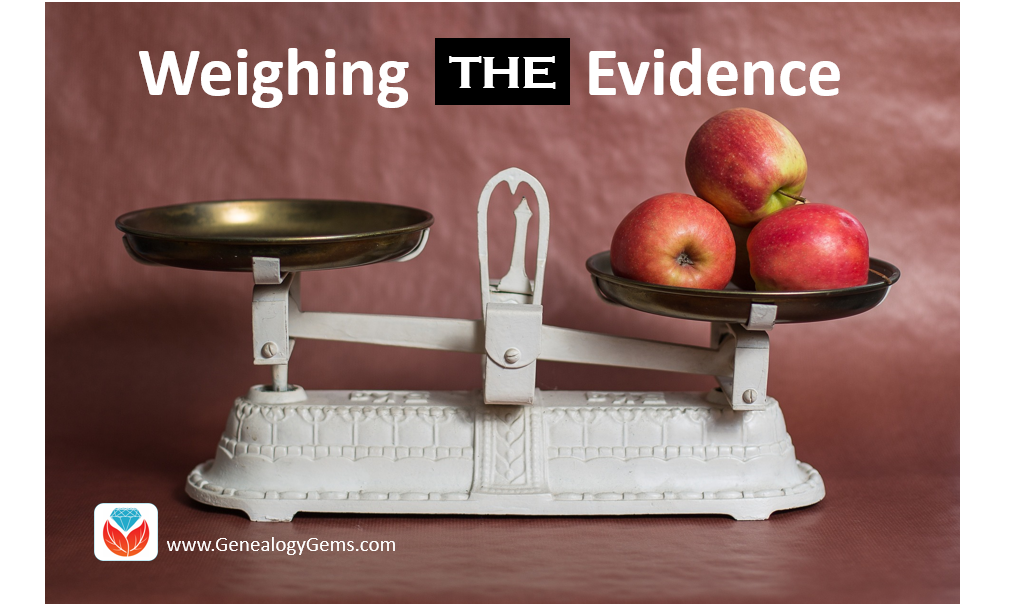
I joke about our recent “cookie incident” here at home. No one wanted to fess up to who ate all the cookies, but it didn’t take long to evaluate the evidence and come up with the culprit. The trail of crumbs, the height at which the cookies were stored, and who was home at the time, were just a few of the ways in which I came to a sound conclusion.
As genealogists, we have to weigh disagreeing or conflicting evidence all the time. Maybe you have two records giving two different birth dates for a great great grandmother. Whatever the conflict, here are some tips to resolving three of the most common conflicts and why they exist.
Item 1: Resolving a Birth Date Conflict
I have found numerous birth date conflicts in my personal family history. Some reasons may include:
- Transcription errors
- Delayed recording
- Lying to protect the couple from embarrassment of a pre-marriage pregnancy
- Engraving mistake on the tombstone
- To avoid a military draft
These are just a few of the many reasons why you may find a conflicting birth date. Resolving a birth date conflict, or any genealogical data conflict, may be possible by remembering the following:
The record recorded nearest the time of the event, by those who have first-hand knowledge, is typically considered the most reliable source.
Here’s an example. Nancy Blevins Witt has two possible birth dates. Using her death record, we can only calculate a birth date based on her age-at-death given in years, months, and days. That calculated birth date would be 19 Nov 1890. However, the date of birth recorded on the 1900 U.S. Federal Census is October 1890, and we were never able to find a birth record. Which birth month is likely correct, October or November?
To make this determination, we will need to consider the following:
1. A death record has an informant. Who was the informant of Nancy’s death record? Did this person have first-hand knowledge of her birth, such as a parent? In this case, the informant was her uncle. There is no way to know if the uncle was present at the time of her birth, but he was alive at the time.
2. Who was the likely informant of the 1900 census? Was that a person with first-hand knowledge of Nancy’s date of birth? We can’t be absolutely sure, but we could suppose that Nancy’s mother was the one who gave the census taker that information. Since the mother was obviously present at the time of Nancy’s birth, we would consider her a reliable witness to the event of Nancy’s birth.
3. Do any of these informants have a reason to lie? Is there something, like money, to be gained by providing a certain birth date? The answer is no.
We can say that the likely accurate date of birth for Nancy is October 1890. Of course, we want to make note of both the records and the discrepancies in our personal database and remember that it is always possible a new piece of evidence will pop up that makes us re-evaluate this assumption.
Item 2: Resolving a Marriage Date Conflict
Marriage date conflicts can be found for a variety of reasons as well. Some of these reasons may include:
- Transcription error
- Delayed recording
- Lying to avoid an embarrassing situation
- Altering the date for the benefit of widows pension

Again, these are just a few of the reasons for a marriage date conflict.
In this next example, John and Eliza are said to have married about 1857. Unfortunately, no actual marriage record was ever found.
There are however, two sources for a marriage date. Both of these sources are found in the War of 1812 Pension Application Files which was viewed online at Fold3.com. A War of 1812 Pension Application is a great place to find marriage information. The widow would have needed to prove that she was indeed the widow of the veteran before being able to receive her pension. Widows sometimes supplied actual marriage certificates, or like Eliza, they may have included affidavits instead.
This pension file for Eliza contained two documents, the first of which was an affidavit given by Eliza herself stating that she and “Jackson Cole” were married in March 1857 in Harlan, Kentucky by Stephen Daniel. Sadly, throughout the application, Eliza changes dates, ages, and names making us wary of whether her information is accurate. She had also been denied pension once before, and this was her second attempt. Because this is a pension and dealt with money allocation, and because she had been denied before, there is a reason for her to lie or fudge dates and details of the facts to meet certain criteria. We will want to take this into consideration. The second document is an affidavit from Stephen Daniel who states he married the couple in 1854.
Now, we want to further evaluate the two sources.
- Stephen has nothing to gain (i.e. money, land, etc.)
- Both Eliza and Stephen had first-hand knowledge of the event.
- They were both remembering this marriage event and testifying to it almost 45 years later.
- Stephen was a minister who married perhaps hundreds of couples.
- Eliza only ever married once.
Who do you think would most likely remember the date of marriage? If you said Eliza, I think you are right. Further, the fact that Eliza had her first child about 1857 is also a strong indication that a marriage had taken place fairly recently. Based on all these reasons, we could assume the most likely date of marriage was March 1857.
Item 3: Resolving a Death Date Conflict
Reasons for conflicting death dates may include:
- Transcription error
- Engraving mistake on the tombstone
- Delayed recording
- Misprint in a newspaper obituary or biographical sketch
An example of a conflicting death date might be that an obituary says the person died on 20 February 1899, but the death record and tombstone give the date as 19 Feb 1899. We all know that newspapers are notorious for misprints. Further, a death record indicating the death date of 20 February 1899 is a record typically made on or near the date of death. This is typically when information is most fresh in the minds of the informants. A newspaper article, however, could have been printed days or even weeks later.
More Gems on Conflicting Evidence in Genealogy and Using the Genealogical Proof Standard
Whatever the conflict, you can typically use these practices to come to a sound conclusion. Oh! And by the way, have you ever heard of using the “GPS?” We aren’t talking about the little device that tells you how to get to that really cool new restaurant. We are talking about the Genealogical Proof Standard. Resolving conflicting evidence is just one of the components of the GPS. To learn more about this high standard, listen to podcast episode #23: Using the Genealogical Proof Standard.
ARTICLE REFERENCES
[1] “1913: Statewide Flood,” article online, Ohio History Connection, accessed 27 Dec 2016.
by Lisa Cooke | Jan 16, 2017 | 01 What's New, DNA
Organize DNA matches with this innovative approach. If you are feeling overwhelmed with your DNA results, you are not alone. Learning to organize your DNA matches in an effective way will not only keep your head from spinning, but will help you hone in on possible matches that will break down brick walls. Here’s the scoop from Your DNA Guide, Diahan Southard.

I can tell whose turn it was to unload the dishwasher by the state of the silverware drawer. If either of the boys have done it (ages 13 and 11,) the forks are haphazardly in a jumble, the spoon stack has overflowed into the knife section, and the measuring spoons are nowhere to be found. If, on the other hand, it was my daughter (age 8,) everything is perfectly in order. Not only are all the forks where they belong, but the small forks and the large forks have been separated into their own piles and the measuring spoons are nestled neatly in size order.
Organize Your Imaginary DNA Drawer
Regardless of the state of your own silverware drawer, it is clear that most of us need some sort of direction to effective organize DNA matches. It entails more than just lining them up into nice categories like Mom’s side vs. Dad’s side, or known connections vs. unknown connections. To organize DNA matches, you really need to make a plan for their use. Good organization for your test results can help you reveal or refine your genealogical goals and help determine your next steps.
Step 1: Download your raw data. The very first step is to download your raw data from your testing company and store it somewhere on your own computer. See these instructions on my website if you need help.
Step 2: Identify and organize DNA matches. Now, we can get to the match list. One common situation for those of you who have several generations of ancestors in the United States, is that you may have ancestors that seem to have produced a lot of descendants. These descendants may have caught the DNA testing vision and this can be like your overflowing spoon stack! All these matches may be obscuring some valuable matches. Identifying and putting those known matches in their proper context can help you identify the valuable matches that may lead to clues about the descendant lines of your known ancestral couple.
In my Organizing Your DNA Matches quick sheet, I outline a process for identifying and drawing out the genetic and genealogical relationships of these known connections. Then, it is easier to verify your genetic connection is aligned with your genealogy paper trail and spot areas that might need more research.
This same idea of plotting the relationships of your matches to each other can also be employed as you are looking to break down brick walls in your family tree, or even in cases of adoption. The key to identifying unknowns is determining the relationships of your matches to each other.
Step 3: See the relationship between genetics, surnames, and locations. Another helpful tool is a trick I learned from our very own Lisa Louise Cooke–that is Google Earth. Have you ever tried to use Google Earth to help you in your genetic genealogy? Remember, the common ancestor between you and your match has three things that connect you to them: their genetics, surnames, and locations. We know the genetics is working because they show up on your match list. But often times you cannot see a shared surname among your matches. By plotting their locations in the free Google Earth, kind of like separating the big forks from the little forks, you might be able to recognize a shared location that would identify which line you should investigate for a shared connection.
So, what are you waiting for? Line up those spoons and separate the big forks from the little forks! Your organizing efforts may just reveal a family of measuring spoons, all lined up and waiting to be added to your family history.
More on Working with DNA Matches
How to Get Started with Using DNA for Family History
Confused by Your AncestryDNA Matches? Read This Post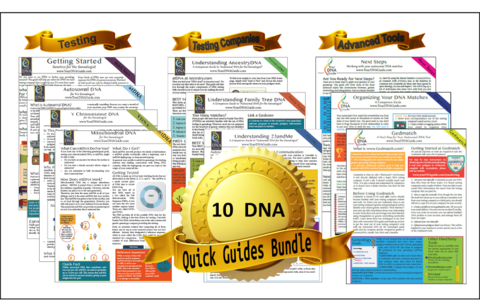
New AncestryDNA Common Matches Tool: Love It!

 If you’ve been a Premium member for a while, you’ll recall Orphan Train by Christina Baker Kline. It was one of our first Genealogy Gems Book Club selections—and based on feedback from you, it’s been one of our most popular choices. If you haven’t listened to Premium episode 121 which includes our interview with Christina, I encourage you to go back and listen. In that conversation, you’ll learn about the history of the orphan train riders in the U.S. and Canada and how the author researched it.
If you’ve been a Premium member for a while, you’ll recall Orphan Train by Christina Baker Kline. It was one of our first Genealogy Gems Book Club selections—and based on feedback from you, it’s been one of our most popular choices. If you haven’t listened to Premium episode 121 which includes our interview with Christina, I encourage you to go back and listen. In that conversation, you’ll learn about the history of the orphan train riders in the U.S. and Canada and how the author researched it.




















